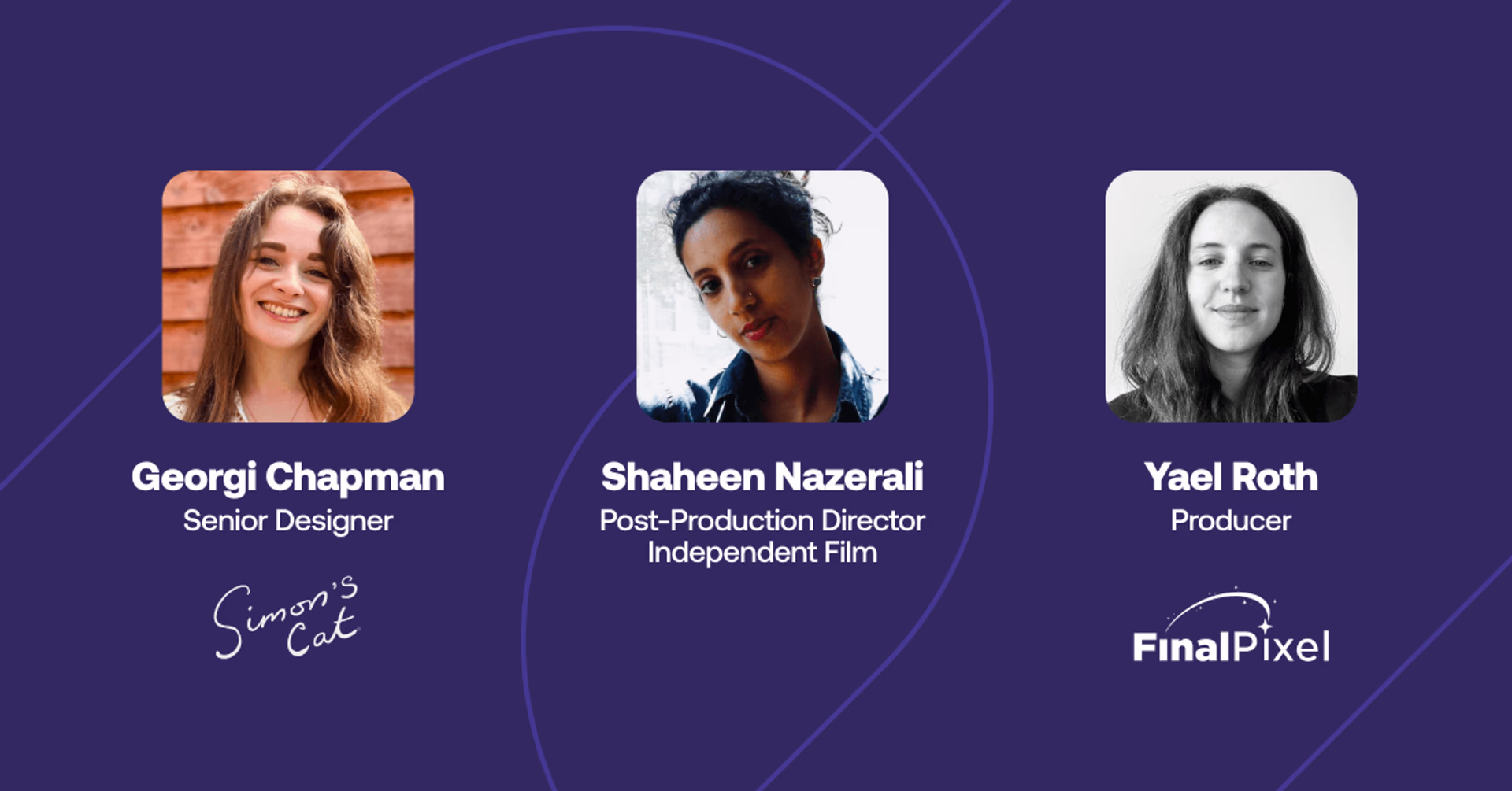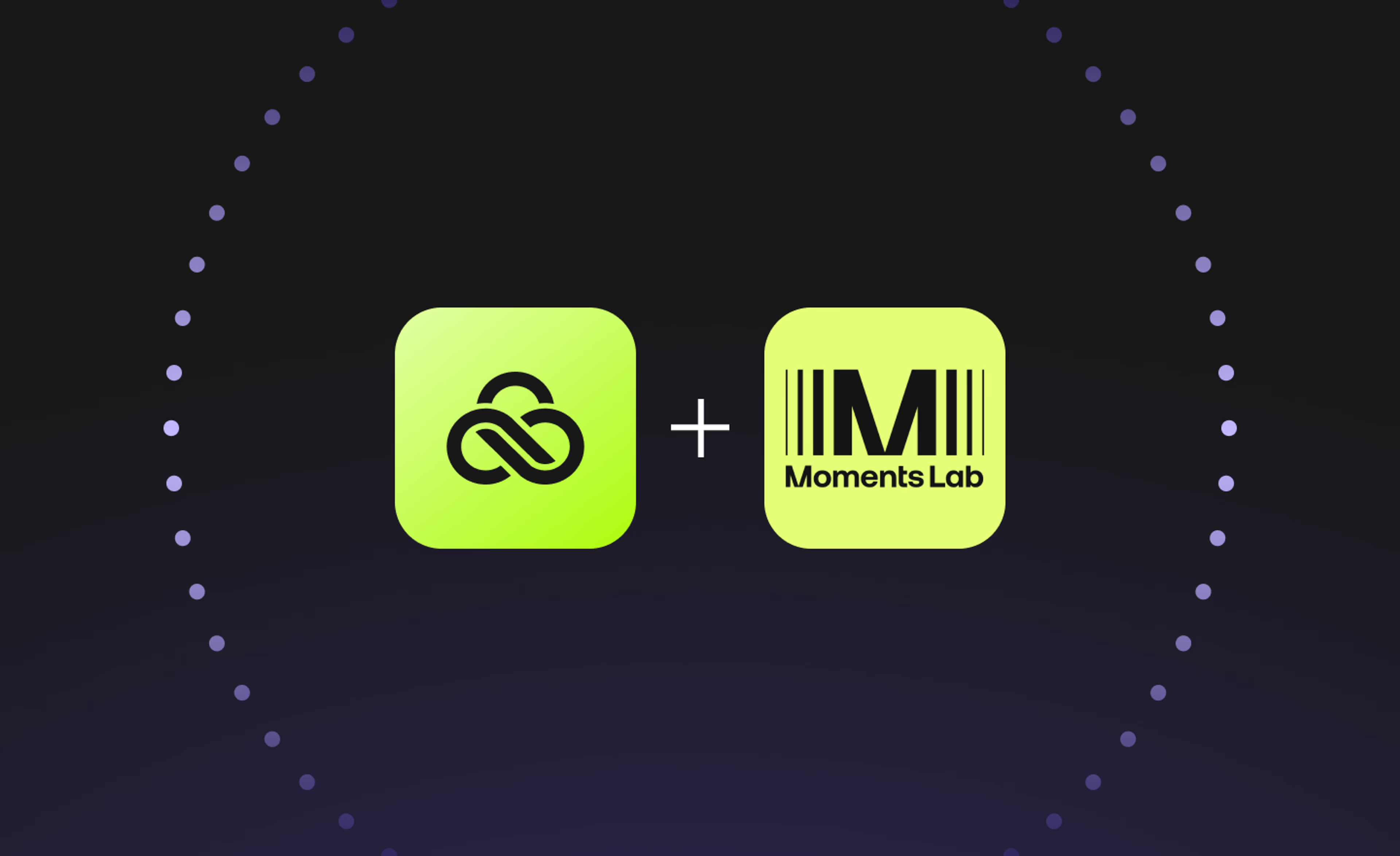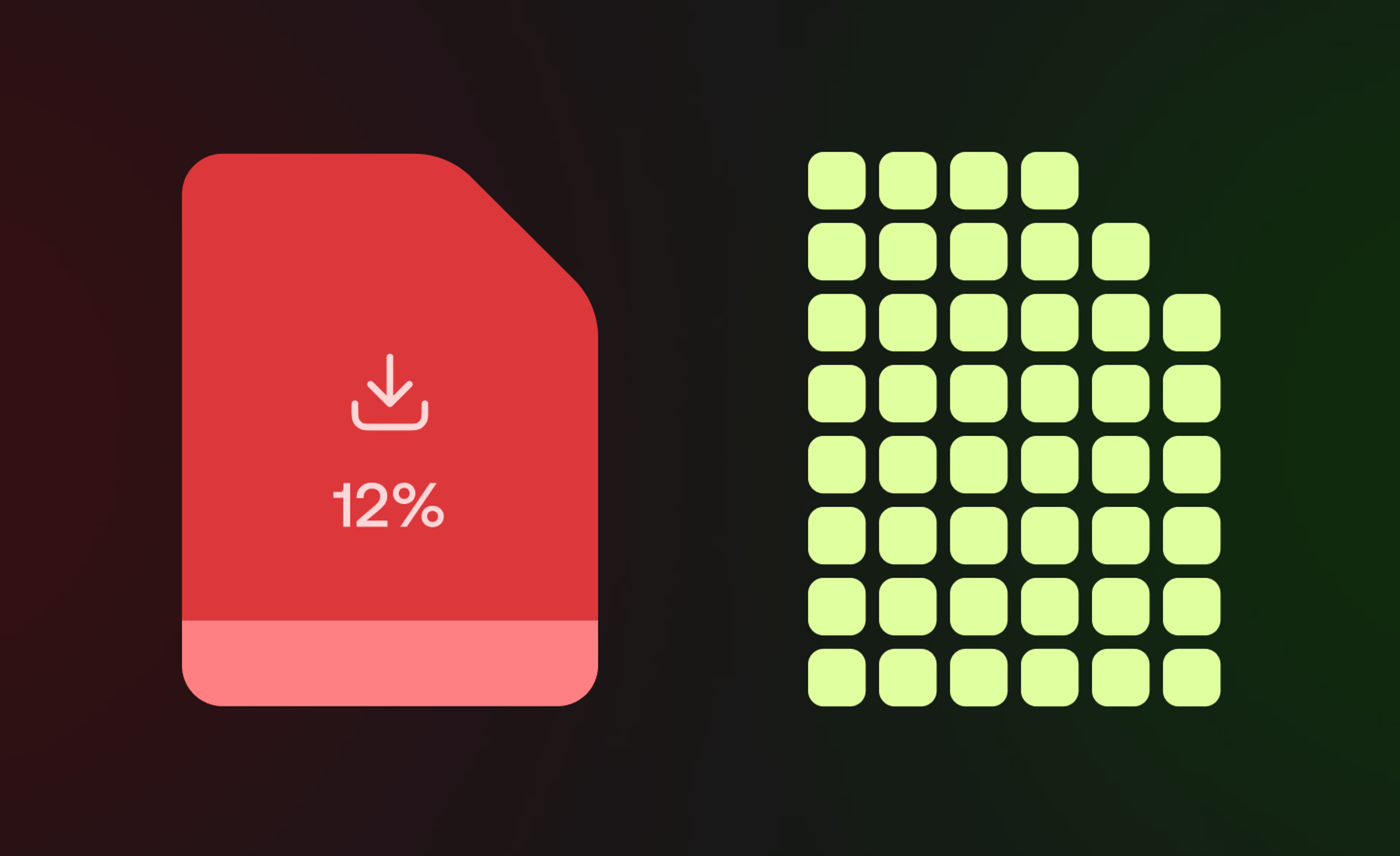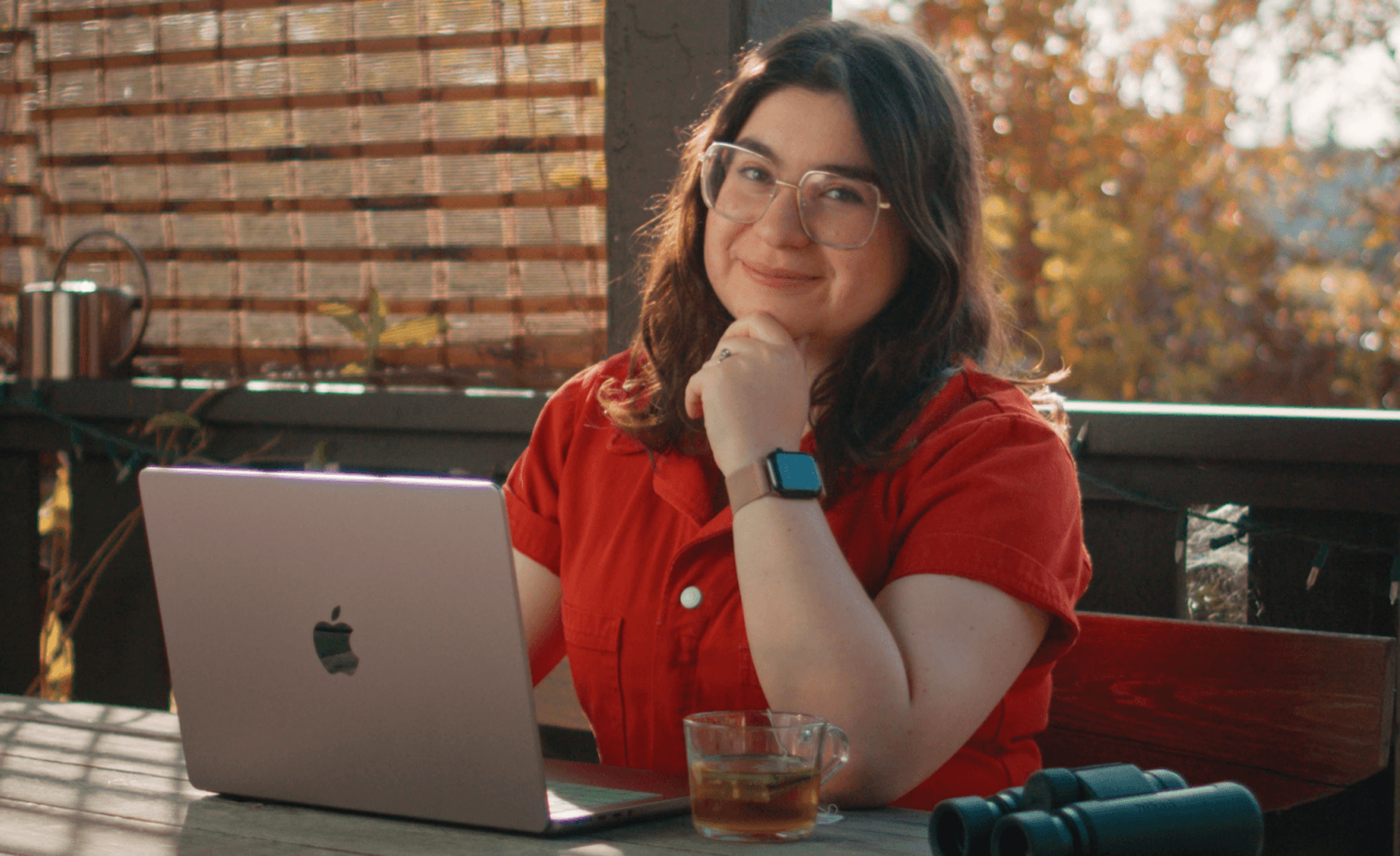Creative production
Collaboration
How the cloud fuels storytelling: 5 takeaways from top creatives
April 2025
4 mins

Table of contents
Your files, faster.
Access any file instantly, anywhere. Collaborate in real-time from one always-up-to-date, secure cloud filespace.
Remember when collaborating meant passing hard drives around like a game of hot potato? Those days are fading fast.
In our recent webinar, How the cloud can enhance storytelling we sat down with some seriously talented creatives who are using cloud technology to fuel their work (and stay sane).
Meet our all-star panel:
Georgi Chapman – Senior Designer, Simon’s Cat
Yael Roth – Producer, Final Pixel
Shaheen Nazerali – Post-Production Director/Independent Filmmaker

From animation to virtual production and post, these creatives shared how the cloud transformed their creative workflows — making collaboration faster, easier and altogether more enjoyable.
Here’s some of the pearls of wisdom our panel shared about working in the cloud.
1. The cloud: from backup to creative backbone
Many creatives used to see the cloud as a backup plan. An overflow to stash files when local storage ran out. It wasn’t part of the day-to-day creative process.
Fast forward a few years, and the cloud has become the backbone of collaboration, making real-time workflows not just possible, but essential.
Yael summed it up perfectly. “Before COVID, the cloud was extra storage on my iPhone… fast forward to today and it really represents real-time collaboration.”
For Georgi and the team at Simon’s Cat, the cloud became a lifeline when they couldn’t access their internal server remotely. “We were downloading files and then reuploading them to the server, which was a really long-winded process — and we lost a lot of files during that time…LucidLink changed everything for us.”
We were downloading files and then re-uploading them to the server and we lost a lot of files during that time. LucidLink changed everything for us.
Georgi Chapman,Senior Designer, Simon's cat
Takeaway: the cloud isn’t just about storage. It can be a way for creatives to work together across locations in real time.
2. Real-time collaboration saves the day (and the project)
We’ve all been there. A crucial drive is stuck in customs, and panic sets in. Worse still, your hard drive could fail altogether.
Shaheen shared two all-too-relatable moments: one where a drive was stuck in customs, and another where she had to fly home with a massive hard drive full of high-stakes footage. “That footage could’ve just been uploaded directly to LucidLink from the shoot,” she noted.
And Georgi’s team? They’re bringing classic Simon’s Cat episodes into full color by digging into old files — stored safely and instantly accessible in the cloud. With real-time access to files, they’ve streamlined their animation pipeline, keeping teams in sync across different stages of production
Takeaway: cloud collaboration isn’t just convenient. It can be a safety net from tech meltdowns and logistical nightmares.
3. Resistance to change is real
Creatives can be…particular (we get it). When new tech comes along, skepticism is part of the process.
As Yael says, “everyone's had it where you try and introduce something that you know is more efficient and helpful, but you'll be met with resistance. But if you really believe in the product and you really think it can help, then it's always worth the headache to get there."
Georgi shared the positive side of embracing new tech. “A younger designer came in and introduced all these tools like Canva and Figma, which are incredibly helpful. I’m so glad I’ve learned them now.”
Takeaway: the toughest part of introducing new tools is getting people to try them. The key? Show how it simplifies their work — then watch adoption skyrocket.
4. Short-form content is king
With attention spans shrinking and platforms favoring short content, Shaheen highlighted a trend we’re all feeling:
“My attention span just isn't the same to sit down and watch a whole movie. And yet I can't say that my content consumption has gone down, but I just think more of that content is short-form.”
For creatives, this can mean more hands-on production and faster turnarounds. Luckily, the cloud can help by streamlining production and removing bottlenecks from your video production process.
Takeaway: the rise of short-form content means workflows need to be faster and more efficient. Cloud collaboration tools help teams crank out content without losing quality.
5. AI: a blessing…and maybe a curse?
AI snuck its way into the conversation (because how could it not?). While there’s excitement, there’s also caution.
Georgi noted, “We're at a really kind of exciting and also scary point, especially with animation and motion graphics and editing, specifically, as we've spoken about with the introduction of AI. I think that's gonna change a lot of things."
But the consensus? AI is a tool, not a replacement — it’s here to support creativity, not overshadow it. As Georgi concluded, it’s about “keeping quality and keeping the integrity of production while still being able to utilize these new tools that are coming in.”
Takeaway: embrace AI for efficiency but hold the line on creative integrity.
Final thoughts: what’s next for creative workflows?
Cloud collaboration is no longer a nice-to-have — it’s the backbone of modern creative workflows.
Whether it’s freeing teams to collaborate across borders or preventing production delays, tools like LucidLink are reshaping the creative landscape.
And while tech will continue to evolve (we’re looking at you, AI), one thing won’t change: creatives will always lead the charge.
To catch the full conversation, check out the webinar here.
Want to see how LucidLink fits into your workflow? Try it out free today.
Keep reading

Creative production
Unlocking the potential of your media library with AI and real-time access
Explore how AI and real-time access make your media library searchable, actionable and ready for faster, smarter storytelling.
16 December 2025, 5 mins read

Product & news
Collaboration
Cloud storage
File streaming vs file acceleration: stop moving files
Discover where file acceleration solutions fall short for collaboration and how file streaming gives teams instant, direct access to cloud data from anywhere.
11 December 2025, 7 mins read

Creative production
How to build a creative workflow that really flows
Discover how to build a seamless creative workflow using practical strategies and tools. Get tips for collaboration and creative project management.
26 November 2025, 17 mins read
Join our newsletter
Get all our latest news and creative tips
Want the details? Read our Privacy Policy. Not loving our emails?
Unsubscribe anytime or drop us a note at support@lucidlink.com.